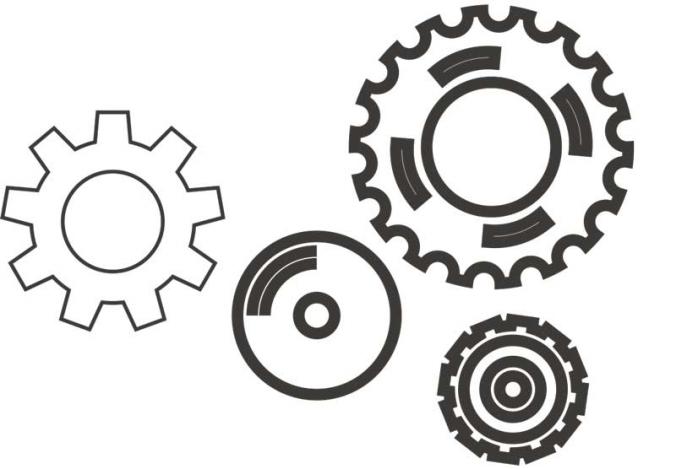Take the Advantage of Dependability Data
When pursuing better profitability, manufacturing companies can utilise analysed dependability data to support necessary decisions; data can be exploited when identifying targets for development and also when defining actions to be carried out. Unfortunately in many cases, dependability data collected over a long period of time cannot be utilised when seeking answers to concrete questions, mainly because of a lack of proper design in data structure and collection.
There are several papers and textbooks describing how reliability data should be analysed and utilised when optimising maintenance, defining warranties, managing spare part stocks, etc. [1, 4]. Before any of these methods can be applied and results can be used to develop the company operations, there is an obvious need to analyze proper data.
The collection of dependability data is a long-term process that needs systematic practices with proper data processing descriptions. Typically in manufacturing companies the dependability data is collected for a long time but cannot be used effectively to support development activities because the database content and/or structure is not properly designed.
Figure 1. Reliability data collection and utilisation.
Data Utilization
Dependability data can be used for example in maintenance planning, justification of modifications, feedback to design and manufacturing, or when deciding about warranties [6], and it can be utilized through thewhole product life cycle. Dependability data can be used in the utilization phase to improve maintenance programmes, to support decisions about modifications or to manage spare part inventory. In the design phase, the dependability data from previous generations or otherwise relevant products can support decisions that are taken. When marketing the products the analysed dependability data can provide support to establish the warranty terms or to convince customers of the quality of the product.
In an ideal world, the ways to utilize data are systematically defined to support a company’s strategic goals such as to be a value added partner for its customers. When the strategic goals are clear, the next step is to define how these goals can be reached. Aims to achieve defined goals can be for example more reliable products than competitors’, good lifetime services or warranty terms. Proper data which can provide information to support the necessary decisions is a valuable asset to support reaching these goals.
Data Collection
One question that comes up regularly is about the variables that should be collected in the dependability database, unfortunately there is no ready answer as specific variables are always case-specific. The main guideline for data collection should always be the needs why the data is collected and what kind of questions need to be answered.
For dependability data the goal is typically to improve the availability of a system and two general questions for data can be addressed
- Which components or subsystems are critical? This question directs development actions to the right targets, e.g. the correct subsystems or components of the system.
- Why are certain components or subsystems critical? This question helps to identify the correct actions to mitigate criticality of the subsystems or components.
It is necessary to analyze data with relevant variables in order to be able to answer these questions. The variables needed to calculate criticality indices of subsystems/components are the same variables needed to answer the first question. For example, if the failure rate is the measure of criticality, then the database needs to contain the ID of the failed item and the time of failure. Variables for the second question should help to identify the reasons for criticality, e.g. what are the components’ workloads, operating environment etc. Recognition of all relevant variables especially for the second question might be hard, and the collection of all of those could even be impossible for a large population. However all variables that can help to identify reasons for criticality are much better than nothing.
Although the required dependability data variables are case-specific, it is possible to find four general data types that should be included in a database. These four types are described in the IEC standard: [6]
- Provided that the item exists in the field, the inventory data includes information of how it is configured and which other components it contains.
- Usage data includes information about when an item was put into operation, how it is operated in the field and when it was removed from the field.
- Environmental data includes information about the operating conditions in terms of factors that are considered important to the dependability of the item.
- Event data includes information about anything that has happened to the item during its life including failures, repairs, upgrades, etc.
The data which is collected today in manufacturing companies is mainly useful to answer the first of the two above mentioned questions [2]. Failures that appear can be assigned to the right subsystems and components helping to recognize critical parts and failure trends, however the current data collection does not typically support finding actions to overcome problems.
When collecting dependability or any other type of data, the required variables are not the only issue to think about and a study has been made which presents 16 dimensions of information quality [5]. Data content and completeness is important when considering data quality, but the usefulness of data is just as important. For example, a company might have a lot of data, but data storage may be fragmented across several databases and files in different departments or units. In such cases the utilisation of data is so difficult and expensive that the data will never be fully used.
In the achievement of good quality data, four main tasks can be identified (Figure 1):
- Defining data content to ensure that the right variables are collected to answer concrete questions.
- Planning data collection to ensure that data is complete and reliable. One important way to ensure the data quality is the motivation of the data collectors.
- Defining a proper data structure to ensure efficient storage and use of data.
- Selection of IT solutions that help the analysis and utilisation of data.
It is important to find out the needs for the data before any of those tasks are carried out, why it is worth spending time and money on collecting the data? It is not an easy or cheap process so there has to be a clear rationale for doing it. It can be claimed that so far data collection has not been well planned or goal-oriented it probably creates more expenses than benefits. It is also important to note that the collection and utilisation of reliability data is not a project or task which can be done once, it is a continuous process.
Information Systems for Life Cycle Reliability Data
The main IT systems for modern life cycle data management are systems for:
- plant data management
- master data management
- maintenance data management In addition, these are supported by software for reliability and risk evaluation.
Plant data management solutions ensure bulk data collection of plant equipment and technical and content correctness of data. All partners (e.g. suppliers, subcontractors, designers) should have access to plant data systems because it simplifies data delivery and updating.
A part of maintenance data is included in the company master data, e.g. spare part numbers, customs, accounts, budget figures, etc., but this kind of maintenance data should be stored in a separate database. A specific master database makes it easier to update basic data items and it also ensures that all the relevant software and people have the same updated data available to them.
Figure 2. IT systems for life cycle data of reliability.
The purpose of maintenance management software is data collection of maintenance events in operational work. Maintenance today is carried out by a maintenance network and therefore maintenance systems are used by several partners and people. This means that IT solutions for maintenance data need to be easy to use, but they also have to be able to automatically check data structure and correctness.
Developing Data Management
It is not common today that manufacturing companies would have allocated resources to reliability or product data management and to design and maintain databases for the whole company. It is hard to see how to achieve or to maintain good data quality if no one is really responsible for data management, which is not a minor task that can be done without proper resources, i.e. without sufficient time and money.
Based on a literature review, a list of five data quality barriers in companies has been identified [3]:
- Lack of delegation of responsibility for maintenance of data
- Lack of rewards for ensuring valid data
- Lack of data control routines
- Lack of employee competencies
- Lack of user-friendliness of software used to manage data
It can be argued that the main reason for the first four barriers in the list is lack of top management support, i.e. resources. This means that the top management must be convinced of the value of good data before data collection and utilisation in the company can be as good as possible. When the value of data has been seen it is also easier to find ways to reward the data provider, which is important because data providers are typically different than the data users.
The development of data content and utilization is nowadays carried out in projects that have a clear start and finish, the result is that the system life cycle data collected by the project is not comprehensively utilised. If data management and utilisation is part of the normal work processes, for example in design and maintenance, the analysed life cycle data is a valuable tool when making different decisions and achieving the strategic company goals.
Understanding and accepting the value of high quality data are the main requirements when developing data management and analysing processes. If that value cannot be identified, there will be a lack of willingness to invest in data management, and the potential of data will never be fully utilized in continuous business development.
»»References ›› [1] B lichke W.R., Karim M. R. & Murthy D.N.P. (2011). Warranty Data Collection and Analysis. Springer- Verlag. L ondon. ›› [2] Franssila, H., Kunttu, S., Saarinen, H. & V alkokari, P. (2012). Management and exploitation of dependability knowledge in product development (In Finnish). Espoo. V TT Technology 48. http://www.vtt.fi/inf/pdf/ technology/2012/T48.pdf ›› [3] Haug, A. & Arlbjørn, J.S. (2011). B arriers to master data quality. Journal of Enterprise Information Management. V ol. 24 N o 3, pp. 288–303. ›› [4] Hoang Pham ed. (2003). Handbook of Reliability Engineering. Springer-Verlag. London. ›› [5] Kahn, B .K., Strong D.M. & Wang R.Y. (2002). Information Quality B enchmarks: Product and Service Performance. Communications of the ACM. Vol. 45, N o 4ve, pp. 184–192. ›› [6] IEC 60300-3-2. (2004). Dependability management – Part 3-2: Application guide – Collection of dependability data from the field.









![EMR_AMS-Asset-Monitor-banner_300x600_MW[62]OCT EMR_AMS-Asset-Monitor-banner_300x600_MW[62]OCT](/var/ezwebin_site/storage/images/media/images/emr_ams-asset-monitor-banner_300x600_mw-62-oct/79406-1-eng-GB/EMR_AMS-Asset-Monitor-banner_300x600_MW-62-OCT.png)



